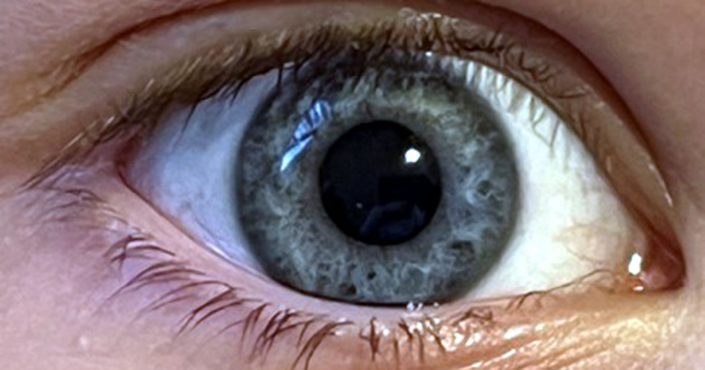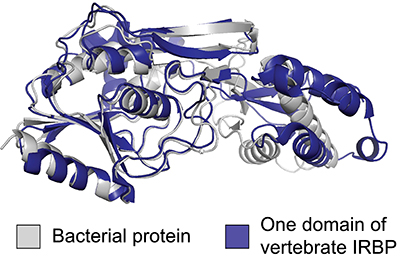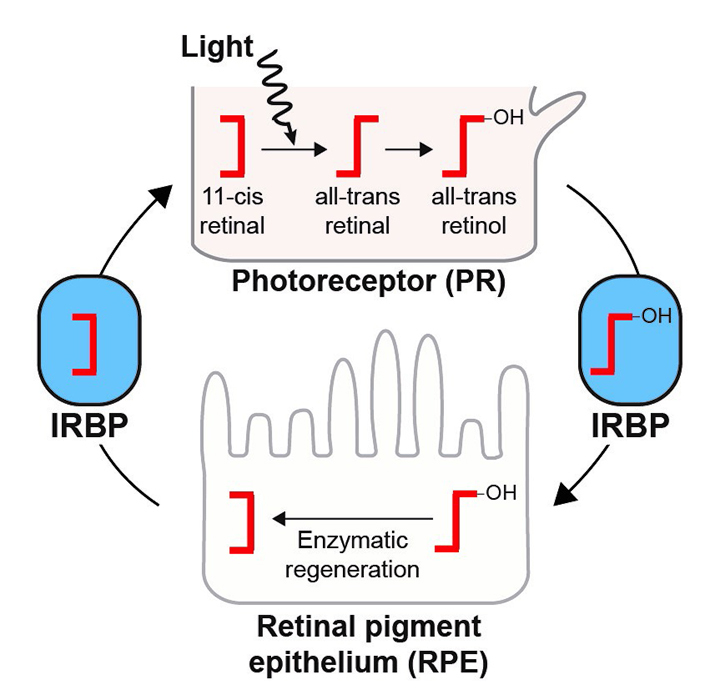Eye-opening Origin Story: Scientists Trace Key Innovation in Our Camera-like Vision to Bacteria
Discovery comes to light with evidence that vertebrates acquired a special protein from bacteria more than 500 million years ago
Story by:
Published Date
Article Content
Humans and other organisms with backbones come equipped with an evolutionary marvel: eyes that function like cameras to provide a finely tuned visual system. Due to its complexity, Charles Darwin described the eye as one of the greatest potential challenges to his theory of natural selection through incremental evolutionary steps.
A notable difference between vertebrate and invertebrate vision is rooted in a unique protein responsible for the specialization of cells that are critical for vision. Mutations in the protein, called the interphotoreceptor retinoid-binding protein, or IRBP, have been known to cause a variety of diseases such as retinitis pigmentosa, but its evolutionary origin has remained elusive with no obvious genetic precursor.
Scientists in the University of California San Diego School of Biological Sciences, publishing in the Proceedings of the National Academy of Sciences, have now traced the 500 million-year-old origin of vertebrate IRBP to a bacterial source. Their discovery, using phylogenetic reconstruction methods, was made possible because of the growing number of fully detailed genomes now available. Their analysis of more than 900 genomes across the tree of life revealed that the IRBP integration in vertebrate eyes was not the result of traditional vertical gene transfer, in which an evolutionary advancement is adapted, or “tinkered with” using available genetic material. Rather, the IRBP was acquired, duplicated and integrated through horizontal gene transfer from foreign bacterial genes.

“It’s a massive shift because this is an entirely new piece of genetic material that’s been introduced from bacteria,” said Biological Sciences Associate Professor Matt Daugherty, the paper’s senior author. Former UC San Diego undergraduate student Chinmay Kalluraya led the study, and UC San Diego graduate students Alexander Weitzel and Brian Tsu contributed computational expertise. “This study shows that a major innovation that distinguishes vertebrate eyes from all the rest of the eyes out there wasn’t done by molecular tinkering but rather a big leap of genetic innovation.”
“It’s a massive shift because this is an entirely new piece of genetic material that’s been introduced from bacteria."

Researchers compared the structure of vertebrate IRBP (blue) with a predicted structure of a similar gene in bacteria.
Once the key gene that eventually became IRBP was acquired from bacteria, a new door opened in vertebrates that allowed retinoids, molecules in the eye that directly sense light, to be shuttled between cell types to efficiently recycle it for further light sensing. This separation of photoreception, or light sensing, and retinoid recycling provides unique functionality to vertebrates and the way they can see.
“In order to see in different wavelengths, there needs to be enough light around and that’s one of the arguments for why we can see in the dark really well—we have this enzymatic recycling system that many invertebrates don’t seem to have,” said Daugherty, a researcher in the Department of Molecular Biology. “Eyes are diverse and complicated, and we’ve gone down this path because of this system.”
With more genomes from more organisms becoming available, the researchers believe that other critical functions and systems will similarly trace their roots to bacteria.
“This reshapes the way that we think about evolution and the way we think about complex structures that seem like they’ve emerged out of nowhere,” said Daugherty.
In addition to Kalluraya, a Selma and Robert Silagi Award for Undergraduate Excellence winner at UC San Diego and now a graduate student at MIT, Weitzel, Tsu and Daugherty coauthored the paper. The research was supported by the National Institutes of Health (R35 GM133633 and T32 GM007240), the Pew Biomedical Scholars program, Burroughs Wellcome Fund Investigators in the Pathogenesis of Infectious Disease program, UC San Diego’s Halıcıoğlu Data Science Institute and the UC San Diego Triton Research and Experimental Learning Scholars program.

A schematic of the vertebrate visual cycle highlighting the physical separation of light sensing.
Share This:
You May Also Like
Stay in the Know
Keep up with all the latest from UC San Diego. Subscribe to the newsletter today.



